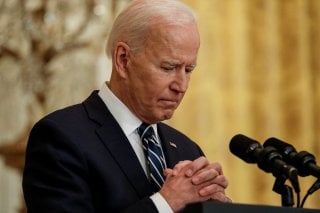More $1,400 Stimulus Checks? Why Joe Biden Might Push for Another Round
Additional payouts, according to a recent report, would reduce the rate of child poverty and overall poverty.
The American Rescue Plan, President Biden’s stimulus package that passed in March, was geared towards giving Americans a hand during the pandemic. But the package had another goal as well: To help assist Americans who are in poverty and left them out of it.
In fact, The Urban Institute issued a report in early this year stating that the four major policies in the Rescue Plan would reduce the number of people in poverty in 2021 by nearly half, with that number going from 44 million to 28 million. This would bring the overall poverty rate into single digits, from 13.7 percent to 8.7 percent.
At the end of March, The Tax Policy Center - a project of that same Urban Institute, along with the Brookings Institution - issued another report, stating that additional payments would further reduce poverty.
“Depending on whether additional $1,400 payments are extended to all people in the US or only to citizens, we project that another payment could further reduce 2021 poverty to between 6.4 and 6.6 percent,” the Tax Policy Center report said. “Two such payments could reduce poverty to between 4.9 and 5.2 percent.”
Democratic senators have called for additional payments, possibly as a provision of the upcoming infrastructure package being pushed by the administration, although it’s not clear if the political will exists to extend the payments, at least in the short term.
The Tax Policy Center proposed a pair of plans, with different income phaseouts, although it concluded that both possibilities would be very helpful when it comes to reducing poverty, especially among marginalized communities with much larger rates of poverty.
“We project the effect of one additional payment under each plan. The share of people lifted out of poverty for the year is similar among both plans, because the payments generally phase out at incomes above the poverty level,” the report says. “Benefits from the two plans differ for people with incomes above the poverty level, with fewer people eligible for the faster phaseout payments than for an additional ARP payment. The faster phaseout payment reduces poverty more because it includes all people in the US; the ARP plan extends payments only to US citizens.”
The additional payouts, according to the report, would reduce the rate of child poverty.
“The ARP focused additional resources on children by increasing the child tax credit, with the largest increases going to the lowest-income families with children. The ARP reduced poverty more for children than any other age group, cutting it by more than half from 13.7 percent to 6.5 percent (Wheaton et. al 2021). Additional payments would further reduce the share of children living in poverty.”
Stephen Silver, a technology writer for The National Interest, is a journalist, essayist and film critic, who is also a contributor to The Philadelphia Inquirer, Philly Voice, Philadelphia Weekly, the Jewish Telegraphic Agency, Living Life Fearless, Backstage magazine, Broad Street Review and Splice Today. The co-founder of the Philadelphia Film Critics Circle, Stephen lives in suburban Philadelphia with his wife and two sons. Follow him on Twitter at @StephenSilver.

